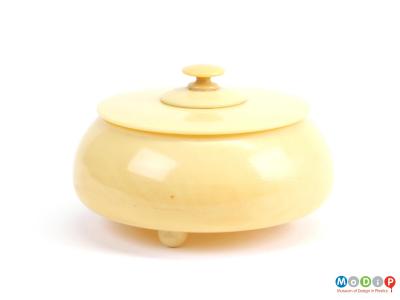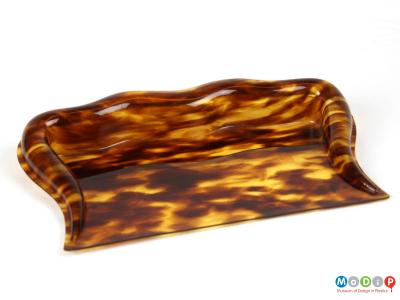Acronym and details: CN
Group: thermoplastic
Developed: displayed at 1862 International Exhibition, London; first common domestic plastic; turned into an artificial fibre like silk in 1884 called Chardonnet silk; use of all kinds almost ceases in 1940s but it is still used for ping pong balls.
Trade names: Parkesine 1862 – 68; Xylonite (British) and Celluloid (USA) from 1870s
Manufacturing process: blow moulding; fabrication, made into blocks that are sliced into thin sheets; thermoforming of thin sheets
Cost: medium
Colour: any, including mottles, pearls and special effects such as imitations of tortoiseshell and ivory
Transparency: transparent to opaque
Rigidity: wide range
Feel: hard
Smell: camphor (used as plasticiser), easiest to smell in containers with lids
Other: blade marks from the slicing into sheets sometimes visible; flammable, hence its early demise
Typical uses: collars and cuffs; dressing table sets and combs; billiard and ping pong balls; knife handles; jewellery and costume accessories; spectacles; toys; false teeth; sculpture e.g. by Naum Gabo; in mortars ; also as support for film and still photography and from 1940s archival material
Degradation: internal cuboid crazing, becomes ‘sugary’ and cracks. Decomposition of the polymer releases nitrogen oxides, generating acidic wet bloom and ultimately breakdown



